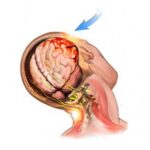Staying connected hasn’t been the same since smart phones made their entry on the electronic communication stage. However, these very same devices are now also linked to higher rates of distractions, especially among young drivers who seem to be addicted to these phones. According to a new study, Americans are now increasingly attached to their smart phones, and this addiction is dangerous.
According to the study conducted by the Alliance of Automobile Manufacturers, more than 90% of smartphone users prefer to keep their phone in their hand or in the cup holder in the car, or on their lap, or on the passenger seat even when they are driving. The study also indicated that close to half of smart phone users would have no problem bringing a portable phone or GPS device into the car if the federal administration went ahead with a ban on in-vehicle communication technology.
Kansas City car accident lawyers find that this increasing addiction to smart phones is especially dangerous in the case of young adults and teenagers. Smart phones allow you to not just have conversations on the cell phone and send and receive text messages, but also update your Facebook statuses, check the latest on Twitter, take pictures and share them with friends, and perform myriad other tasks. Teenagers don’t comprehend the dangers of distracted driving, and therefore, it is not surprising to learn that smart phone use is so high among this set of drivers.
Teenagers are not just some of the heaviest consumers of communication technologies like smart phones, but are also at a high risk of distracted driving. This is a deadly combination that places teen drivers at a heightened risk of accidents.
Through Drive By Example, I have been helping to draw awareness to the risks and hazards of distracted driving. We need to start actively pursuing solutions because the problem is going to get worse before it gets better.





